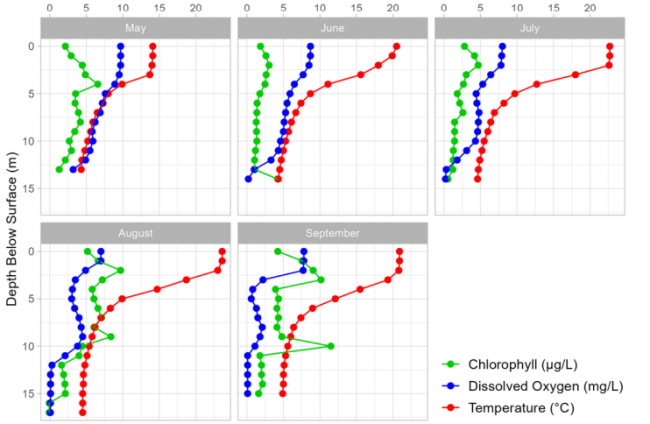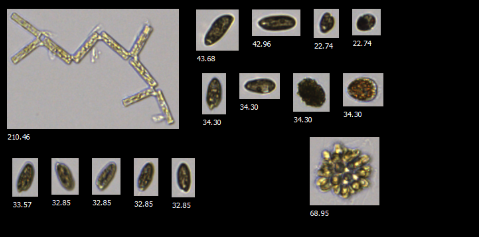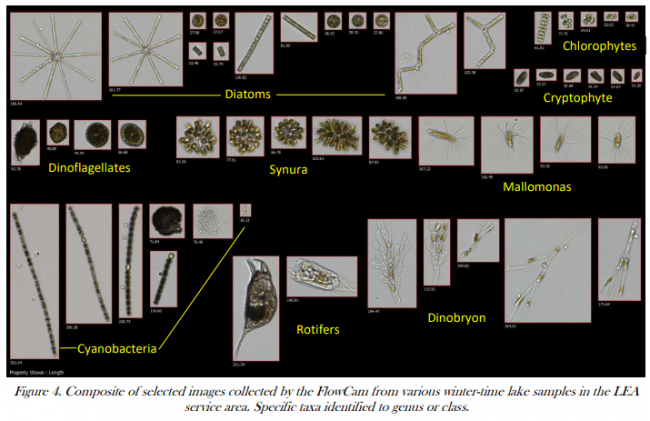
May – LEA’s water testing team collected the first fluorometer profile in mid-May. At that time, Middle Pond was stratified. In the upper waters, fluorescence values increased until reaching their peak at 4 meters. This fluorescence increase occurred near the thermocline where the rapidly changing water density provided algae a place to “sit”. After this peak, fluorescence rapidly decreased and then they remained at lower levels throughout the deep waters.
June – There was slightly more fluorescence in the upper, sunlit waters, but overall values were low and fairly uniform throughout the water column. Increased fluorescence values near the bottom are likely caused by interference from bottom sediments.
July – Warm surface waters provided algae favorable growing conditions, noted by the elevated fluorescence readings in the upper waters. An increase in dissolved oxygen can be seen near the second fluorescence peak at 7m, likely a byproduct of photosynthesis. In the deep, fluorescence decreased and became uniform throughout the rest of the water column.
August – Warm surface waters provided algae favorable growing conditions, noted by the elevated fluorescence values in the upper waters. Fluorescence values were highest at 2 meters. In the middle waters, fluorescence values decreased before increasing again at 9 meters. This second fluorescence peak is accompanied by an increase in oxygen. This oxygen is likely produced by algae as a by-product of photosynthesis.
September – Warm surface waters continued to provided algae favorable growing conditions, noted by the elevated fluorescence values throughout the upper waters. Fluorescence values were highest at 3 meters and 10 meters. The second, deeper fluorescence peak is again accompanied by an increase in oxygen. This oxygen is likely produced by algae as a by-product of photosynthesis.
Synopsis: Algae concentrations were moderate and quite variable throughout the water column and the season. Favorable conditions for algae growth are often observed near the surface waters and sometimes below the thermocline.

Gloeotrichia echinulata (a type of cyanobacteria (blue-green algae) commonly found in low-nutrient waters) can be seen with the naked eye. Gloeo density is reported as a value ranging from 0 – 6, based on the number of Gloeo colonies seen through a Secchi scope. Higher values indicate more Gloeo colonies. Gloeotrichia echenulata colonies were not observed in Middle Pond in 2023.

